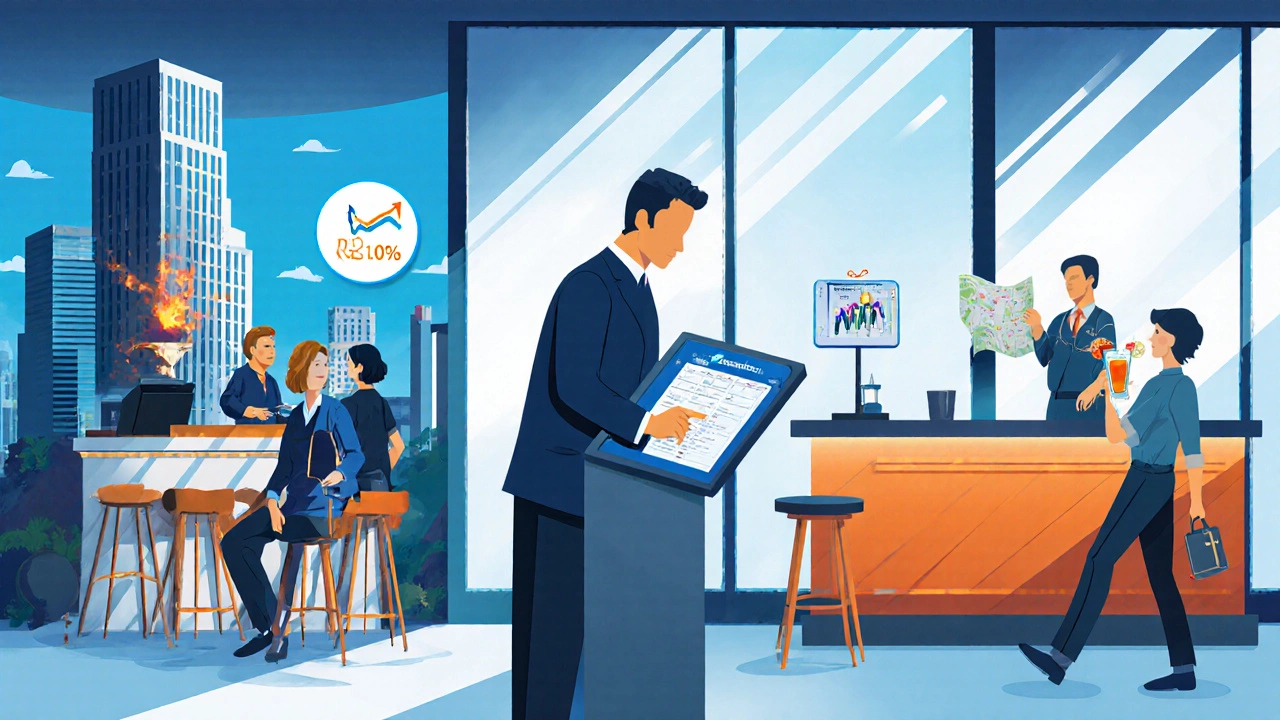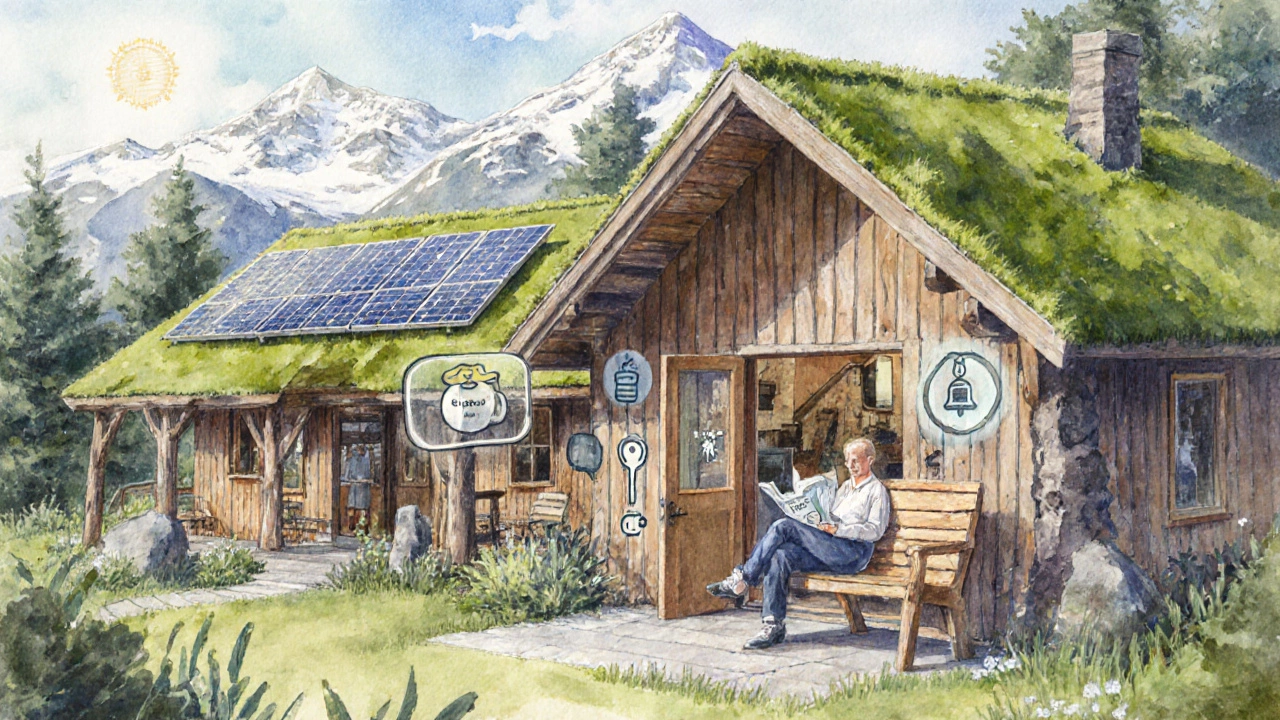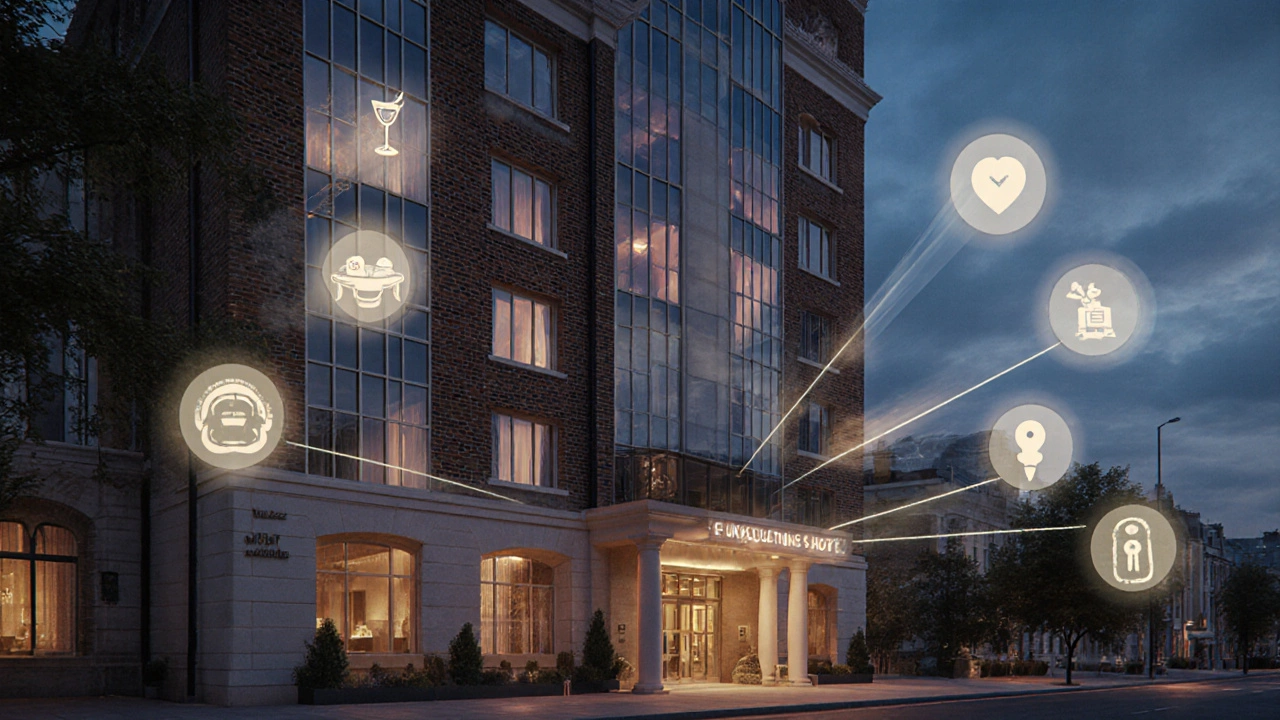Quick Takeaways
- Uniqueness in a hotel business comes from the mix of revenue streams, guest experience design, and strategic positioning.
- Location, brand story, and technology integration act as differentiators that can’t be copied easily.
- Sustainability and market segmentation add layers of depth that attract niche travelers.
- Understanding these pillars helps owners, investors, and managers craft a compelling value proposition.
- A simple comparison chart shows how four common hotel types leverage uniqueness differently.
When we talk about Hotel Business is a commercial operation that provides lodging, meals, and related services to travelers, the first thing most people notice is a building with rooms. But the real magic lies in the invisible layers that turn a generic building into a destination people choose over and over. Below we break down the seven pillars that make a hotel business stand out, sprinkle in real‑world examples, and give you a handy checklist to audit your own property.
1. Diverse Revenue Streams Beyond the Room Night
A classic hotel used to rely almost entirely on the nightly rate. Today, successful Revenue Streams include food & beverage outlets, event spaces, spa services, co‑working zones, and digital add‑ons like premium Wi‑Fi. For instance, a mid‑scale hotel in Auckland added a rooftop bar that now generates 15 % of total income, while a boutique property in Queenstown leverages guided adventure tours as a high‑margin add‑on.
Key tip: Map every touchpoint where a guest could spend money and ask yourself whether it solves a need or simply adds clutter.
2. Guest Experience as a Signature
Guests don’t remember the color of the carpet; they recall the feeling they left with. Guest Experience is the sum of every interaction-from check‑in to checkout, from staff greeting to in‑room amenities. A business hotel in Wellington that introduced a 10‑minute express check‑in kiosk cut wait times by 40 % and saw a 12 % lift in repeat bookings.
Pro tip: Identify one “wow moment” that only your property can deliver and weave it through every service layer.
3. Location Strategy and Micro‑Neighborhood Fit
Location isn’t just city vs. countryside; it’s about the micro‑neighborhood’s rhythm. A hotel near a tech hub will attract day‑trippers looking for conference rooms, while one perched on a historic promenade draws leisure travelers seeking culture. Location Strategy matches the property’s core offering with the surrounding environment’s demand patterns.
Example: The Devonport waterfront hotel partnered with a local ferry service, offering bundled tickets that turned a transportation hub into a guest acquisition channel.

4. Brand Identity and Storytelling
Brands that tell a story earn loyalty faster. Brand Identity captures the personality, values, and visual language that guests associate with the hotel. The “Eco‑Heritage” brand of a small lodge in the Southern Alps highlights local timber construction and carbon‑neutral operations, pulling eco‑conscious travelers from abroad.
Action step: Draft a one‑sentence brand promise and test it with five recent guests-does it resonate?
5. Service Design That Aligns with Target Guests
Service design is the blueprint that turns a promise into reality. Service Design maps out staff roles, SOPs, and technology touchpoints to deliver a consistent guest journey. Business hotels often standardize the desk‑to‑doorroom service timeline, while boutique properties may offer personalized concierge calls.
Case in point: A hotel chain introduced a mobile app that lets guests select pillow type before arrival, reducing front‑desk queries by 30 %.
6. Technology Integration as a Competitive Edge
From keyless entry to AI‑driven pricing engines, technology can be a true differentiator. Technology Integration refers to the adoption of digital tools that enhance operational efficiency and guest satisfaction. A boutique hotel in Christchurch uses a chatbot that upsells spa packages during the booking flow, increasing ancillary revenue by 9 %.
Quick win: Implement a cloud‑based property management system (PMS) that syncs with OTAs and reduces overbooking errors.

7. Sustainability Practices That Appeal to Modern Travelers
Eco‑friendly measures are no longer niche; they’re expected. Sustainability Practices include energy‑saving lighting, waste reduction programs, and sourcing local food. Hotels that publish a transparent carbon footprint report often see a 5‑10 % premium on room rates.
Tip: Start with low‑cost actions-e.g., replace single‑use toiletries with refill stations-and communicate the impact on guest profiles.
Comparison: How Different Hotel Types Leverage Uniqueness
| Hotel Type | Primary Target Guest | Key Revenue Focus | Signature Differentiator |
|---|---|---|---|
| Business Hotel | Corporate travelers | Meeting rooms & express services | Location near office districts + fast check‑in |
| Boutique Hotel | Leisure & experience‑seekers | Food‑and‑beverage + curated experiences | Design‑driven storytelling |
| Resort Hotel | Vacation families | All‑inclusive packages | On‑site amenities (pools, spa, kids club) |
| Budget Hotel | Cost‑conscious travelers | Room night volume | Price transparency + essential comforts |
Checklist: Auditing Your Hotel’s Uniqueness
- List all Revenue Streams and rank them by profit margin.
- Map the guest journey and pinpoint a single “wow moment”.
- Assess whether the Location Strategy aligns with your target market’s needs.
- Write a one‑sentence Brand Identity and test it with recent guests.
- Document core SOPs under Service Design to ensure consistency.
- Identify two technology upgrades that could cut labor costs or boost ancillary sales.
- Implement at least one measurable Sustainability Practice and publish the result.
Next Steps for Different Personas
- Owner looking to reposition: Use the checklist to pinpoint gaps, then pilot a “signature experience” (e.g., local art showcase) for three months.
- General manager wanting higher ancillary revenue: Focus on technology integration-add a mobile upsell module and train staff on cross‑selling.
- Investor evaluating potential acquisition: Compare the property’s revenue mix and sustainability scores against the table’s benchmarks.
Why do some hotels charge higher rates even with similar rooms?
Higher rates usually reflect added value such as a strong brand story, exclusive amenities, or premium revenue streams like conference facilities. Guests are willing to pay for the unique experience that sets the hotel apart.
Can a small boutique hotel compete with large chains on technology?
Absolutely. Boutique hotels can adopt cloud‑based PMS, mobile keys, or AI chatbots at a fraction of the cost of a chain’s custom solution. The key is to choose tools that directly enhance the guest journey you’ve designed.
How important is sustainability for business travelers?
A growing segment of corporate travelers now have ESG guidelines from their employers. Hotels that can demonstrate measurable sustainability actions often win corporate contracts and can charge a modest premium.
What’s the easiest revenue stream to add for a mid‑scale hotel?
Introducing a co‑working space or a small meeting‑room rental is low‑cost and leverages existing square footage. It attracts day‑use guests and boosts ancillary spend without major renovations.
How can I measure the impact of my brand story?
Track repeat‑guest rates, social‑media sentiment, and referral traffic after launching a brand campaign. A noticeable uplift in these metrics signals that the story resonates.
